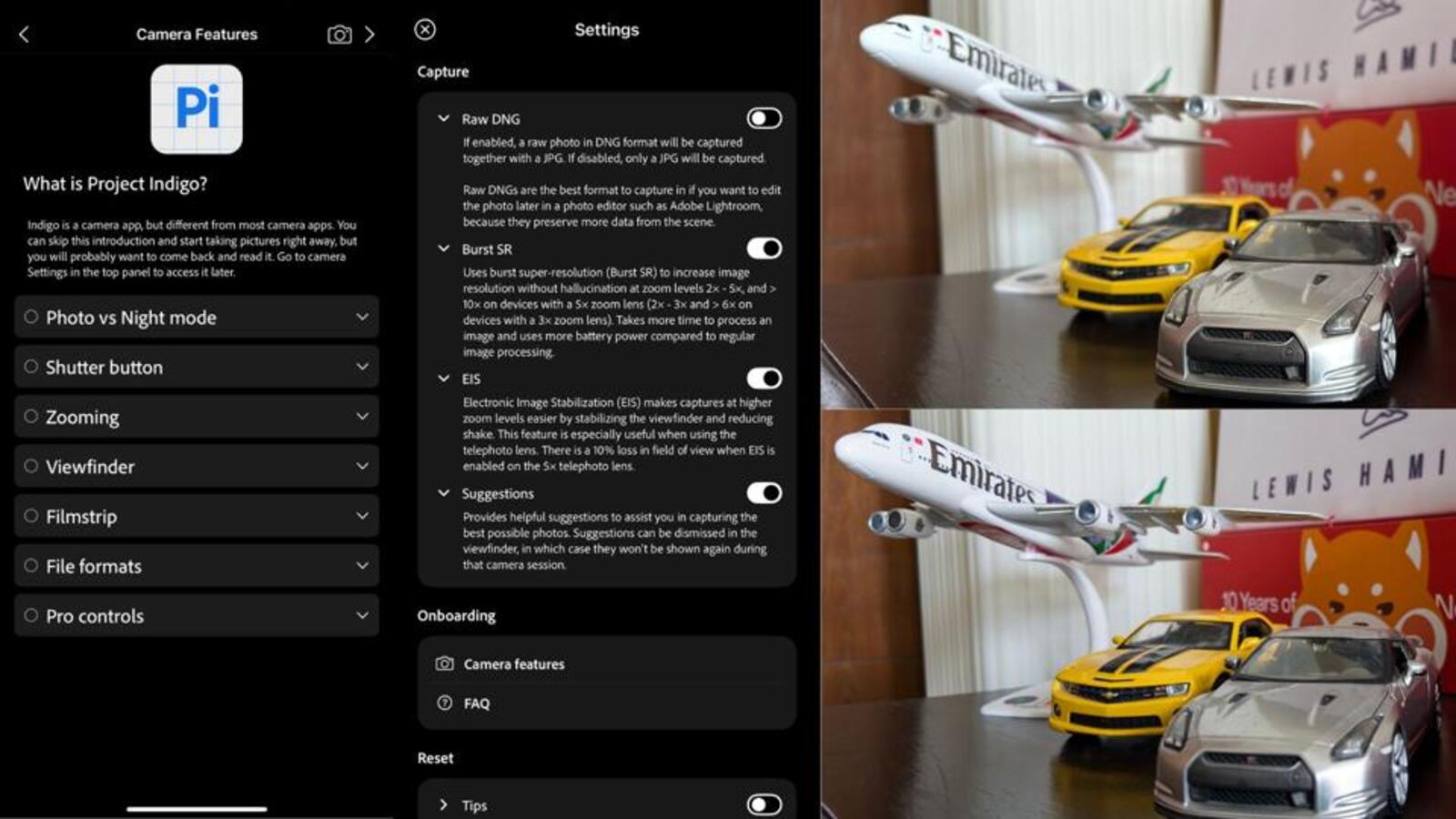
Tech Tonic | A philosophical war over the iPhone camera app
How did your country report this? Share your view in the comments.
Diverging Reports Breakdown
Tech Tonic | A philosophical war over the iPhone camera app
Adobe’s new free camera app, called Project Indigo, has been put together by former Pixel camera engineers and combines computational photography with a layer of AI features. Likely, a significant moment in an increasingly competitive third-party camera app ecosystem. Halide Mark II positions itself with professional-grade manual controls, and a tech called Neural Macro that allows iPhones without a dedicated macro lens to get photos with that effect. Camera+ 2 uses AI extensively, providing full manual control while still providing full automatic optimisation. VSCO, for instance, puts forward a proposition of blending the camera app with extensive editing capabilities as well as quick access to social media apps. Final Cut Camera and Leica Lux some very likeable ones too. The idea for third- party camera apps has always been to offer a little more in terms of functionality and perhaps unlock certain functionality that the default camera app doesn’t have. It is a philosophical tension, but for now perhaps not an undeniably definitive one. A user perhaps has to ask themselves which side they lean on.
Project Indigo, on its part, emerges from an impressive pedigree, having been developed by Marc Levoy and Florian Kainz, who were instrumental in establishing the Pixel phones as the benchmark smartphone cameras for many years (and many consider that to be the case even now as well). It wasn’t plain sailing, as competition caught up, but Pixel phones made a smart pivot towards computational photography capabilities, when the time was right. With Project Indigo, Levoy and Kainz, have access to the iPhone photography hardware. I’ve used it to a certain extent, and all I’ll say for now is that it is simply not a reimagined version of the Pixel Camera app. This is something that is going much beyond what the default Camera app can do. But here’s the thing — not all the time. As a user, there’s choice, but for now perhaps not an undeniably definitive one.
Project Indigo has a unique computational photography pipeline. “First, we under-expose more strongly than most cameras. Second, we capture, align, and combine more frames when producing each photo — up to 32 frames as in the example above. This means that our photos have fewer blown-out highlights and less noise in the shadows. Taking a photo with our app may require slightly more patience after pressing the shutter button than you’re used to, but after a few seconds you’ll be rewarded with a better picture,” Adobe says.
This is where the big change lies — an aggressive multi-frame approach that’s a more intensive computational strategy than many competitor apps, with insistence that priority is on image quality (requiring a dash of patience). This should work as well for casual users, as for the more enthusiastic demographic (I wouldn’t call them professional, that side of the table has their own preferences), with the option of enabling the full array of manual controls, as well as both JPEG and raw formats.
Strength in diversity?
The third-party camera app landscape as it stands, reveals a fascinating philosophical divide between different approaches to smartphone photography. Halide Mark II, Camera+ 2 and VSCO, some prime names, and Final Cut Camera and Leica Lux some very likeable ones too. The idea for third-party camera apps has always been to offer a little more in terms of functionality and perhaps unlock certain functionality that the default camera app doesn’t have. That’s before we get to the main bit — image processing and the differing approaches.
At one end of the spectrum lies the “zero processing” movement. Halide’s Process Zero, is an example. This basically means something that has no AI input and no computational photography pipeline in image processing. There are two distinct schools of thought on this — one that believes shunning AI is a better bet to produce beautiful, film-like natural photos, while the other believes AI does enough to accentuate detailing that may otherwise have been missed. It is a philosophical tension.
VSCO, for instance, puts forward a proposition of blending the camera app with extensive editing capabilities as well as quick access to social media apps. Halide Mark II positions itself with professional-grade manual controls, and a tech called Neural Macro that allows iPhones without a dedicated macro lens to get photos with that effect. Camera+ 2 uses AI extensively, for scene detection and automatic optimisation while still providing full manual control when needed.
I’d say Project Indigo is embracing a bit of the latter, but with certain diversions towards improvement, like they have explained.
The fundamental disagreement about image processing is perhaps why we have differing approaches, and thereby preference based choice for users. A user perhaps has to ask themselves which side they lean on. Is the intent to capture reality as accurately as possible, or to create the most visually appealing image regardless of any computational gymnastics required? There will not be a one-size-fits-all answer.
Project Indigo’s entry into this ecosystem represents more than just another camera app — it signals Adobe’s serious interest in mobile photography and computational imaging. Of course they pitch for closer integration with their creative apps, including the Lightroom app for smartphones. I do see Adobe with the biggest trump card up their sleeve — the mix of their own approach to research, in-house AI development which Firefly resoundingly testifies to, and the expertise of former Pixel engineers who know what they’re doing.
We seem to be at a point where philosophy will provide a foundation for more sophistication.
Vishal Mathur is the Technology Editor at HT. Tech Tonic is a weekly column that looks at the impact of personal technology on the way we live, and vice-versa. The views expressed are personal.
